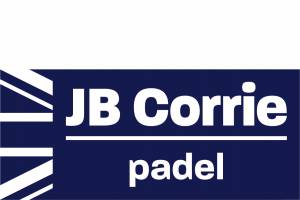What is the Difference Between Tennis and Padel Tennis?
But to understand the difference, we must explain the basic rules of padel. While this exhilarating sport is growing in popularity, it’s still relatively new in the sporting world.
The Basic Rules of Padel
The best way to describe the game of padel to a newcomer is to call it a hybrid of tennis and squash. The premise is basically the same as tennis, but serving involves bouncing the ball on the ground first and under arm serve only from waist height.
The key difference between padel and tennis is the use of the four walls that surround the court. In addition, most games of padel tennis in the UK and Europe are played in doubles.
You score points in padel when one of the following occurs:
- On the opponent’s side, the ball bounces more than once
- The opponent strikes the ball into the net
- The opponent hits the ball into their own half of the court
- The ball hits an opponent
- The opponent sends the ball outside of the playing area without a bounce
- The opponent hits the ball against the opponent’s wall without a bounce
Players can allow balls to bounce off the wall, after hitting the floor before taking their shot. And they can also hit the ball off a wall and over the net.
Key Differences Between Tennis and Padel
Everything from the padel racket used in padel tennis to the glass walls that surround the court gives the increasingly popular sport an identity all of its own. To understand why more and more people are turning to padel tennis in the UK, we need to examine how it differs from tennis in more detail.
The Racket
A tennis racket is perhaps one of the most recognisable items of sports equipment there is. Characterised by its strings and long handle, this ubiquitous item is unmistakable.
A padel tennis racket, on the other hand, features a short handle and a foam core that’s protected by carbon fibre outer casing.
The taught strings on a tennis racket give the player enough power to clear the net from the back of the court. Padel rackets don’t have strings, so controlling where the ball goes is crucial. And the player must rely on their power, rather than the extra force exerted by a stringed racket.
The Court
Padel is played on a smaller court — just 20m x 10m, approximately 33% smaller than the size of a tennis court. You can fit significantly more padel courts than tennis courts into a space as they are enclosed, not requiring the outer space of a tennis court. A padel court is surrounded by four walls, which further inhibits each player’s movement but creates longer rallies. Players, therefore, have to develop a similar level of spatial awareness required for playing squash.
The playing area in a singles tennis court is 23.77m x 8.23m, while the area in a padel court is 20 x 10m.
The Ball
The balls used for padel tennis in the UK look very similar to those used in standard tennis. Indeed, they’re often made in the same factories, using the same moulds. But when you bounce a padel ball, the difference is instantly noticeable.
A padel tennis ball isn’t as bouncy as a standard tennis ball. Players need to use brute force to get the ball to bounce off the back walls — in much the same way as they do in squash.
The Net
While it may not be instantly noticeable, there is a slight difference between the nets used in padel and tennis. The standard height for the centre of a tennis net is 0.914m, while the standard height for a padel net is 0.88m. That’s a difference of roughly an inch.
Shots
Padel shots require more sharp, snappy shots using lots of wrist action than tennis shots. But because the padel racket handle is short, the ball is always closer to your body than it is in tennis. This gives you more control over where the ball goes.
Taking accurate and powerful shots in padel requires a good grip on the racket. Even when you’ve mastered your grip, however, you’ll find sending the ball over the net in padel requires a lot more energy than in tennis.
A Typical Match
While the basic premises of tennis and padel are very similar, the dynamics and action during a match differ on a few levels:
- Padel allows more room for error
- Padel is more strategic than tennis
- Padel rallies tend to be longer than tennis rallies
- Padel isn’t overly reliant on technique, strength or serving skill
- Cooperation is crucial for every padel point
- Players need to think several shots ahead in padel
Once you’ve tried padel, you’ll never want to stop! Padel court installation at your home, business premises or leisure facility is cheaper and simpler than most people expect and takes significantly less space than that required for tennis courts.
Contact JB Corrie today on 01730 237100 to discuss your Padel tennis or standard tennis court options in detail or complete our quick quote online form and a member of our dedicated team will be in touch.
